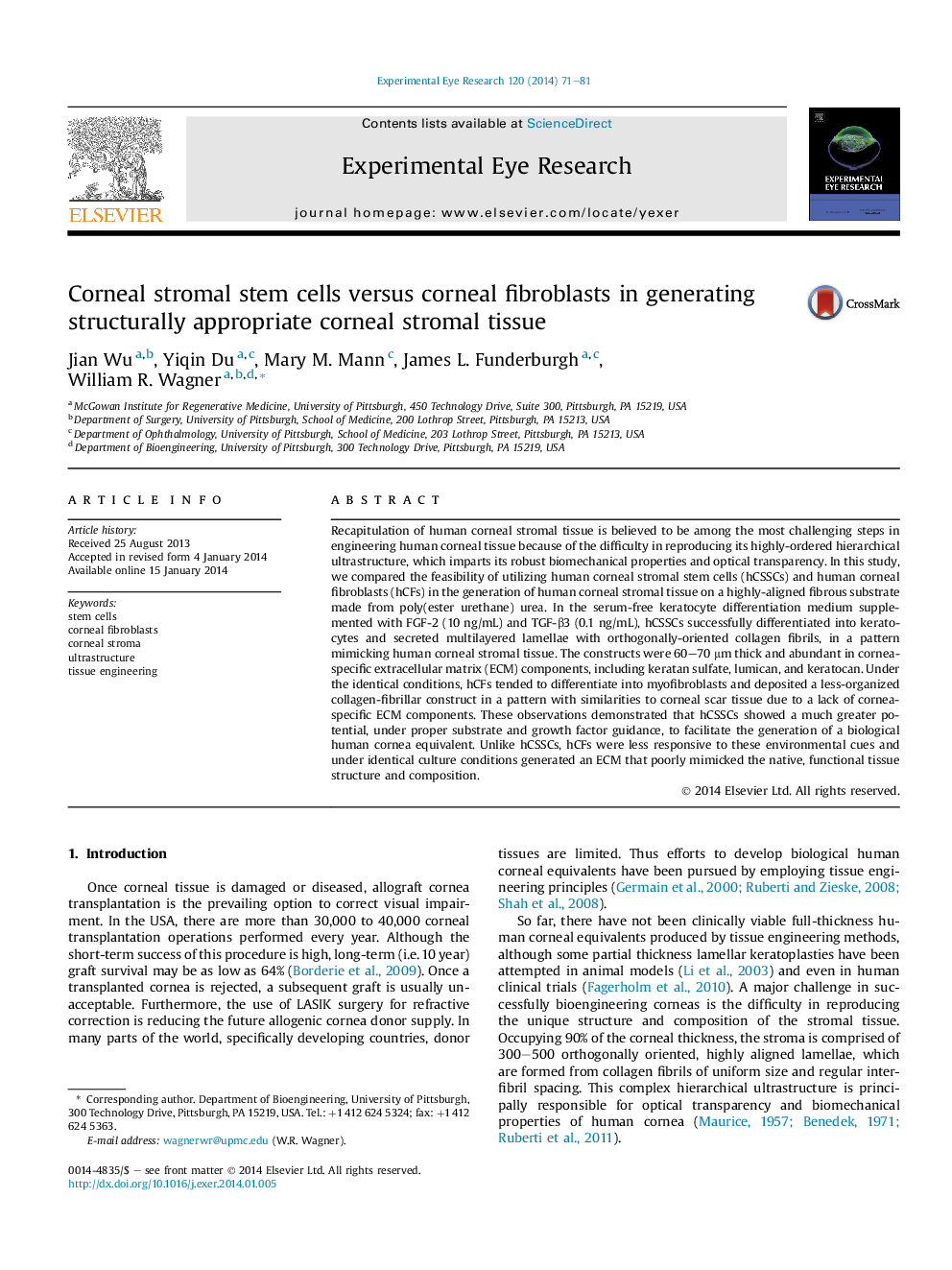| کد مقاله | کد نشریه | سال انتشار | مقاله انگلیسی | نسخه تمام متن |
|---|---|---|---|---|
| 6197063 | 1602602 | 2014 | 11 صفحه PDF | دانلود رایگان |
- Corneal stromal stem cells have greater potential to generate stromal-like tissue.
- Matrix generated by corneal fibroblasts is not well-organized.
- Stem cell-based constructs exhibit more abundant corneal proteoglycans.
- Stem cell-based constructs present more corneal collagen-type I, V, VI.
Recapitulation of human corneal stromal tissue is believed to be among the most challenging steps in engineering human corneal tissue because of the difficulty in reproducing its highly-ordered hierarchical ultrastructure, which imparts its robust biomechanical properties and optical transparency. In this study, we compared the feasibility of utilizing human corneal stromal stem cells (hCSSCs) and human corneal fibroblasts (hCFs) in the generation of human corneal stromal tissue on a highly-aligned fibrous substrate made from poly(ester urethane) urea. In the serum-free keratocyte differentiation medium supplemented with FGF-2 (10 ng/mL) and TGF-β3 (0.1 ng/mL), hCSSCs successfully differentiated into keratocytes and secreted multilayered lamellae with orthogonally-oriented collagen fibrils, in a pattern mimicking human corneal stromal tissue. The constructs were 60-70 μm thick and abundant in cornea-specific extracellular matrix (ECM) components, including keratan sulfate, lumican, and keratocan. Under the identical conditions, hCFs tended to differentiate into myofibroblasts and deposited a less-organized collagen-fibrillar construct in a pattern with similarities to corneal scar tissue due to a lack of cornea-specific ECM components. These observations demonstrated that hCSSCs showed a much greater potential, under proper substrate and growth factor guidance, to facilitate the generation of a biological human cornea equivalent. Unlike hCSSCs, hCFs were less responsive to these environmental cues and under identical culture conditions generated an ECM that poorly mimicked the native, functional tissue structure and composition.
Journal: Experimental Eye Research - Volume 120, March 2014, Pages 71-81
